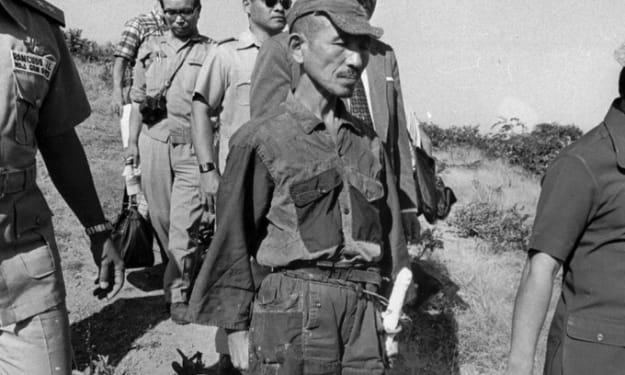The Lebensborn Legacy
Anni-Frid Lyngstad’s Story

Introduction
The Lebensborn program, one of the most secret and sinister projects of the Nazi regime, aimed to create a super Aryan race. This program, which involved the kidnapping of thousands of children and the establishment of breeding clinics, has left a lasting impact on many lives. One such life is that of Anni-Frid Lyngstad, a member of the famous pop band ABBA. This article delves into the details of the Lebensborn program and the story of Anni-Frid, a product of this program.
The Lebensborn Program
The Lebensborn program, initiated in Germany in 1935, expanded into several occupied European countries during World War II. The program was part of Heinrich Himmler’s grand plan to create a super Aryan race. Around 12,000 blue-eyed, blond-haired children were kidnapped by the SS as part of this program. These children, known as the Lebensborn or The Fount of Life, were either kidnapped from within German-occupied Europe or born in breeding clinics where SS officers were required to mate with suitably chosen German women.
The program also extended to northern Europe’s Scandinavian countries, where SS personnel were told to mate with local women, regardless of their marital status. The children born into the Lebensborn were baptized at a special SS ceremony, binding them to the Nazi ideology for life. They were given the finest accommodation, homes, food, and clothing. Children without families were housed in special orphanages and then given to rich Nazi families to bring up.
Anni-Frid Lyngstad: A Lebensborn Child's Struggle for Identity
Born in Norway in 1945, Anni-Frid Lyngstad's life was intertwined with the Lebensborn program. Her mother, Synni Lyngstad, was the victim of a brief relationship with a German army sergeant, Alfred Haase. This liaison resulted in Anni-Frid's birth and the subsequent ostracism of her mother and grandmother. Forced to flee their home in Norway, they sought refuge in Sweden, where Synni passed away when Anni-Frid was only two years old.

Anni-Frid's childhood was marked by hardship and confusion. She struggled to come to terms with her identity, haunted by the stigma associated with her Nazi-linked origins. However, despite these challenges, she found solace in music, beginning her singing career at a young age.
Anni-Frid’s Journey to Stardom
Despite her traumatic childhood, Anni-Frid managed to carve out a successful career in music. She began singing at a very young age and by the time she was a teenager, she was performing with various dance orchestras and achieved some success in Sweden. Her big break came when she met Benny Andersson, Björn Ulvaeus, and Agnetha Fältskog and formed ABBA. The group went on to become one of the most successful pop bands in history, selling over 380 million albums and singles worldwide.

Anni-Frid found her father by chance three decades later. They met for an emotional reunion in 1977 at her Swedish villa, instigated by Benny Anderson, ABBA founder and Anni-Frid’s then-husband. The somewhat Sullen Anni-Frid, who withdrew for years in Greta Garbo style, is nevertheless viewed as something of a role model by her fellow Lebensborn children still living in Norway.
The Impact of the Lebensborn Program
The Lebensborn program has had a lasting impact on its victims and their families. Many of the children born through the program grew up without knowing their true identities. They were often shunned by society and faced discrimination and abuse. Despite these challenges, many Lebensborn children, like Anni-Frid, have managed to overcome their past and lead successful lives.
However, the legacy of the Lebensborn program continues to be a source of pain and controversy. Many Lebensborn children are still searching for their true identities and seeking recognition and justice for the crimes committed against them.
Anni-Frid: A Symbol of Resilience
Anni-Frid’s story is a testament to the resilience of the human spirit. Despite being born into a program that sought to manipulate the course of human evolution, she rose above her circumstances to achieve international fame and success. Her story serves as an inspiration to others who have faced adversity and shows that it is possible to overcome even the darkest of pasts.

Conclusion
The Lebensborn program, one of the darkest chapters in human history, has left a profound impact on its victims. However, the story of Anni-Frid Lyngstad serves as a beacon of hope. Despite the hardships she faced, she rose to international fame, becoming a symbol of resilience and hope for many Lebensborn children. Her story underscores the power of the human spirit to overcome adversity and serves as a stark reminder of the horrifying consequences of the Lebensborn program.
About the Creator
Richard Clements
Unearthing the Mysteries of History, Crime, and the Unknown
Delve into the captivating world of history, crime, and mystery through factual writing. Explore the past, unravel human behavior, and solve enigmas.
Enjoyed the story? Support the Creator.
Subscribe for free to receive all their stories in your feed. You could also pledge your support or give them a one-off tip, letting them know you appreciate their work.






Comments
There are no comments for this story
Be the first to respond and start the conversation.